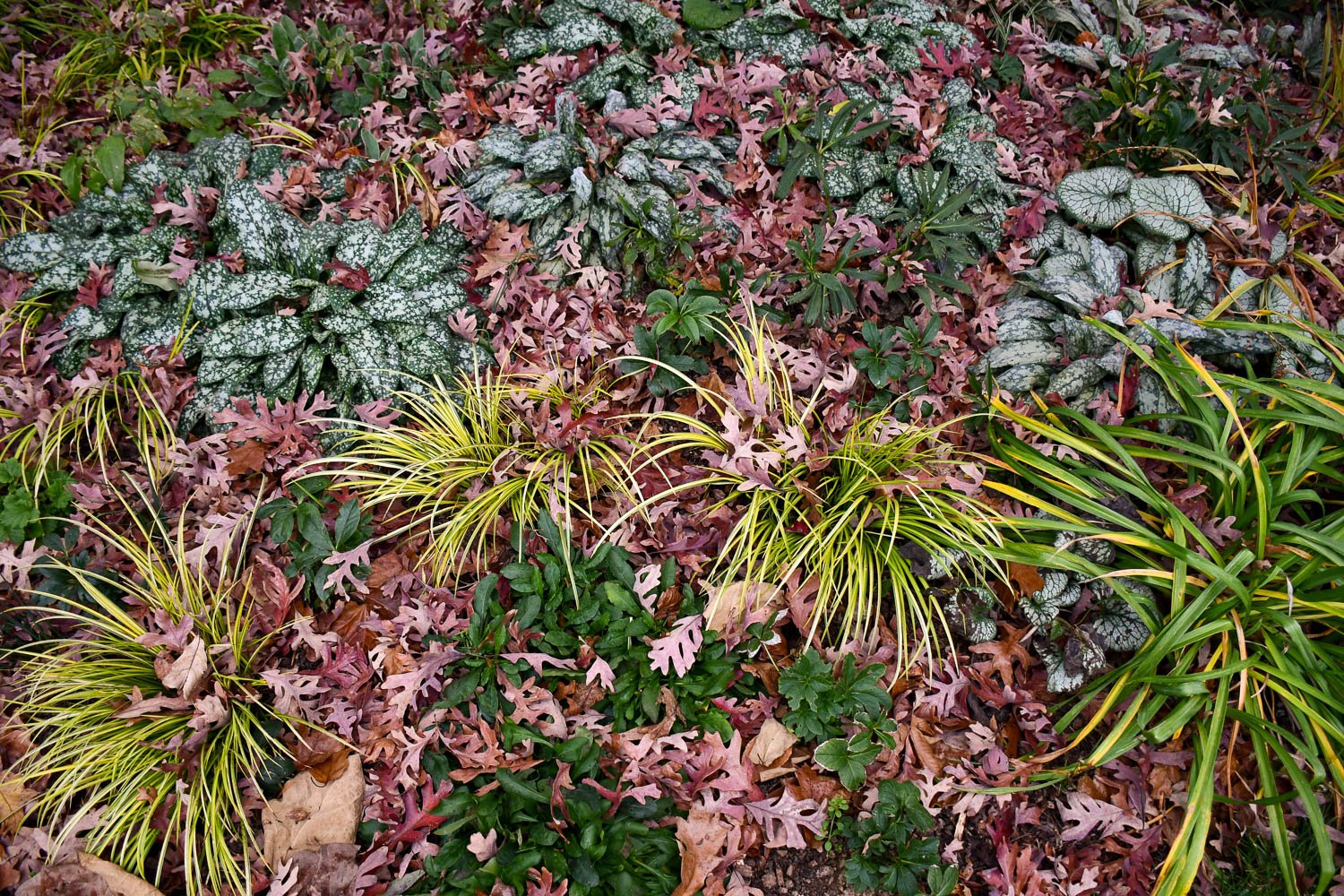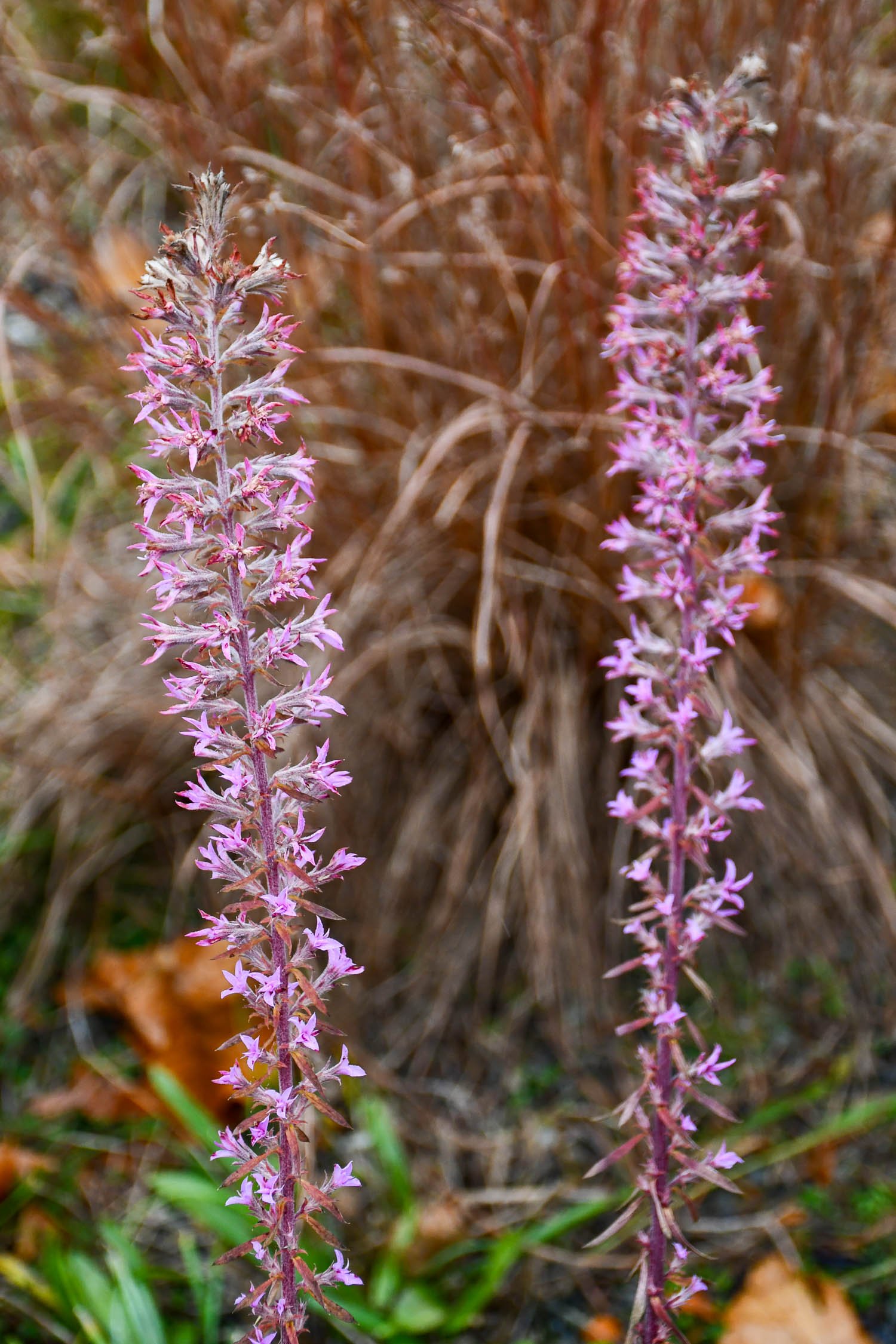I had a wonderful trip to Pennsylvania earlier in the month keynoting the Ecological Landscape Alliance’s conference Regenerative Solutions for Resilient Landscapes. The next day, I garden hopped to see some of the great flora of the region.
I so love traveling north in autumn to experience fall before the color starts to show in east Texas. Some years due to our drought and heat, that’s the only color I see. While the Philly area was just past prime for fall color, there was still plenty of leaves hanging on.
One of the highlights was visiting Chanticleer. While it had closed for the season, Steve Foltz, Director of Horticulture at the Cincinnati Zoo and Botanical Garden, and I got a behind-the-scenes tour of how the garden shuts down for the winter from dear friend and grounds manager at Chanticleer Jeff Lynch. Since Chanticleer was closed for the season, Jeff talked about how the garden deconstruction had begun and apologized saying that things didn’t look as good. Steve and I chuckled, because we knew that on a scale of 1 to 10 this meant things had gone from a 14 down to a 13.9. Tsk tsk. Jokes aside, visiting this magical garden anytime of the year is worthwhile to see the craft that the horticulturists have wrought through the seasons.
Bill Thomas also joined us for part of our visit, and it was good to catch up with him and get his perspectives on how the garden was changing. New paths were being installed for permeable paving, and we talked about how much of the garden equipment had gone to battery powered. I left inspired, and I hope that in the photos that follow you find inspiration and ideas, too.
The best fall color I’ve seen on Frangula (Rhamnus) caroliniana (Carolina buckthorn). The fruit of this native are beloved by birds.
A ‘Candy Roaster’ winter squash hangs in the vegetable garden in a macramé net. I’m always amazed how they make every inch count at Chanticleer, and that includes growing plants vertically.
A myriad of foliage textures and colors including Acorus, Pulmonaria, Brunnera, and Helleborus emerge from freshly fallen leaves. This time of the year is wonderful to inspect the garden for interesting basal foliage.
Jeff Lynch said that Epimedium ‘Domino’ (barrenwort) is one of the best performers for them. Even when not in flower, it forms a wonderful green carpet.
Leaves of all shapes and sizes float in a stream at Chanticleer.
Dan Benarcik grew these seedling Metasequoia and used them as a miniature forest in the tennis court garden step planters. It’s a cute idea to use saplings that pop up in plantings.
The rain picked up for a bit while we were in the tennis court garden. At this time of the year, I could really see the winter bones emerging. For example, the lime green stems of Cornus sericea 'Bud's Yellow' (yellow-twig dogwood) popped against Taxus × media 'Hicksii’ (yew).
Areas of the lawn where bulb displays are planted are not cut in the spring until the bulbs have time to store up energy for next year, and then after their initial cut, they were kept short. But, this summer to be more ecologically friendly and provide habitat for insects, they mowed these areas about once every six weeks. The halo in the image above shows one of these areas that had just been cut.
Massive Strelitzia nicolai (white bird of paradise) made it through two nights of around 25°F Jeff said. He also noted the ingenious idea one of the gardeners had of building a wire cage around plastic pots, filling it with sphagnum, and then planting the quickly spreading Chlorophytum comosum ‘Variegatum’ (spider plant) in the sphagnum to hide the pot.
But, the Aechmea blanchetiana ‘Hawaii’ didn’t fare as well. Even in their demise, the ghostly foliage still look stunning.
The flowery lawn behind the house is always inspiring to me. Using a mix of fescue grasses as a matrix to plant other things into is a brilliant idea. The yellow foliage was from Hemerocallis ‘September Sol’ (daylily).
A bowl of fruit on a table near the house shows the abundance of the season. How many different species can you identify? I see blackened Musa velutina (hardy orange), Magnolia gynoeciums, the orange Rohdea japonica (sacred lily), the yellow Citrus (Poncirus) trifoliata (hardy orange), and green brains of Maclura pomifera (osage orange).
Avid readers know I’m an aster nut, and this Ampelaster caroliniana (climbing aster) on the elevated walkway made my jaw drop. Jeff provided an excellent scale of just how large this climber was. It’s a later flowering plant that can usually skirt around light frosts.
This incredible yet little used climbing aster deserves a close up! Even though the garden was closed, these treasures could still be seen.
I have longed to see a mass planting of Amsonia hubrichtii (Arkansas bluestar) in the autumn, and this display quinched that thirst. Pycnanthemum incanum (hoary mountainmint) seed heads dotted throughout were a nice touch. The foliage has also dropped enough off the Salix alba ‘Britzensis’ behind to see the firey stems smoldering.
Asian woods were all aglow with colors from Acer palmatum (Japanese maples) and Lindera angustifolia (aka Lindera salicifolia, Asian spicebush).
The comment was made, “Look up!” Above us we saw a majestic and enigmatic Emmenopterys henryi (emmenopterys) with its persistent bracts. To see it in flower this summer would have been stunning. The species has only flowered a handful of times in the US, and people are still trying to understand the flowering mechanics.
Up on the rock ledge we were able to appreciate the complexity and coherence of colors and textures around the pond. I love the echo of the white bark of the Plantanus (syacmore) with the white pappus of Baccharis halimifolia (sea myrtle).
The gravel garden was mostly absent of flowers, but the evergreens contrasted nicely with the grasses.
A late Liatris elegans (elegant blazing star) still has colorful, lavender-colored bracts
Steve and Jeff stand next to a beautiful specimen of Hydrangea anomala subsp. petiolaris (climbing hydrangea) that scales the ruin at Chanticleer.
One of my favorite Hydrangea quercifolia (oakleaf hydrangea) cultivars is SNOWFLAKE™ (‘Brido’). I love the double bracts, and in the fall the foliage turns lovely shades of maroon.
Acer palmatum ‘Sango-Kaku’ burns bright in the Sporobolus heterolepis (prairie dropseed) prairie.
Where some gardeners might see disaster, at Chanticleer they see opportunity. This fallen tree uprooted part of the garden in Bell’s Woodland, but after making paths accessible, they allowed the rootball to remain. Now, asters bloom on this green wall, a seedling Cercis (redbud) has sprouted on the top, and other seeds have been sown to take advantage of this windfall. We talked about how the holes they leave behind in the ground are great habitat for salamanders and frogs.
























